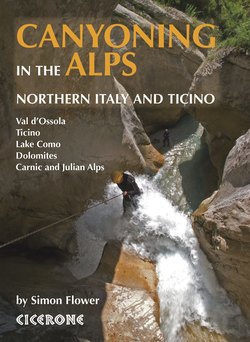Читать книгу Canyoning in the Alps - Simon Flower - Страница 9
На сайте Литреса книга снята с продажи.
ОглавлениеPREFACE
Offering a stunning selection of routes in the best areas, this guide to canyons in the Alps of northern Italy or Ticino is not an exhaustive one.
Canyons of mediocre quality have been excluded, as have some better canyons in mediocre areas. The latter category includes Val Susa (west of Torino), Aosta and Lake Garda, all of which contain a number of fine canyons, but too few to justify a week away. If, having tried some of these routes, you find you wish to explore the Italian-speaking Alps in greater depth, there are a number of foreign-language guides available (listed in Appendix B).
Remarkably, despite a firm following on the continent, canyoning remains a relatively unknown sport in the British Isles, even among the outdoor communities. Few people really know what the sport entails, believing it to be something akin to gorge walking or white-water rafting. Ignorance stems from the lack of opportunity to practise the sport. In these islands there are no canyons of comparable quality to the continental ones, and with a lack of English-language guidebooks on the market, few people venture abroad to try it. Those that do will often give it a go on ‘rest days’, in areas celebrated more for climbing or caving than canyoning, while others visit the more publicised canyons of southern Europe. The canyons in these sunnier climes are better known for beauty than for sport, and their ease ensures that many are overrun with private and professional groups alike.
It is therefore hardly surprising that the smattering of British or Irish people who have tried canyoning have a fairly neutral view of it. The aim of this guide is to shake you out of that neutrality. If you get half as much enjoyment out of these canyons as I did, then it will have fulfilled its role.
Simon Flower, October 2012
Deep pools in Mondelli 2 mean that much can be jumped or tobogganed
The delicate 50m pitch in Osogna Inferiore (Route 35 in the Ticino region)
